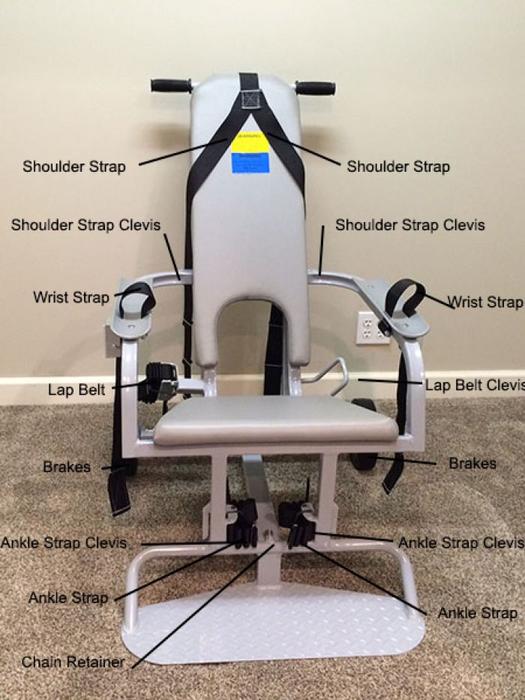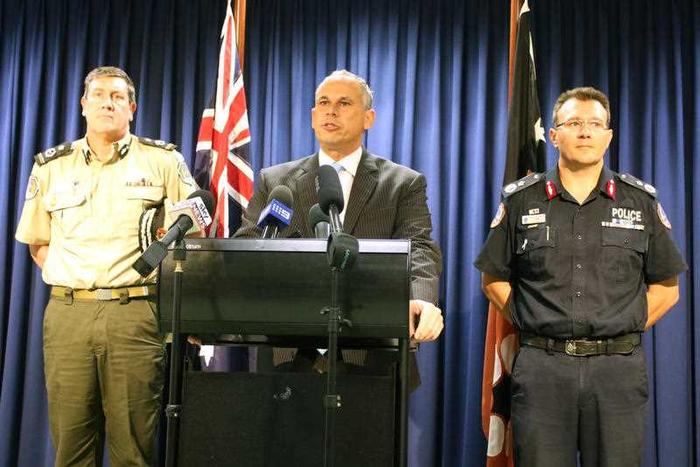The image of 17-year-old Don Dale Junvenile Detention Centre detainee Dylan Voller strapped into a mechanical restraint chair with a spit hood placed over his head was shown on the ABC's Four Corners program.
The footage allegedly filmed in the Northern Territory prison facility showed Voller tied to a mechanical restraint chair, which is fitted with straps at the ankles, wrists and neck, and with a spit hood secured over his head, for a period of two hours.
It seems that John Elferink was trying to retrospectively justify the use of the mechanical restraint chairs.
Northern Territory Chief Minister, Adam Giles suspended the use of mechanical restraint chairs on children until a Royal Commission could investigate the events at Don Dale.
Juvenile justice agencies across the country have told SBS the Northern Territory was alone in its use of the controversial device on children - every other Australian state and territory said mechanical restraint chairs were not used on young people held in their juvenile detention facilities.

A diagram of a mechanical restraint chair used in media reports earlier this year about the new NT allowing their use. Source: NITV News
Use of mechanical restraint chairs in the Northern Territory
In May 2016, the Northern Territory Parliament passed legislation introduced by attorney general John Elferink to ensure "that modern mechanical devices of restraint or advancements in technology" could be legally used on children detained in the territory.
Alex Tighe, a member of the legal team representing Dylan Voller, alleges his client was strapped into a mechanical restraint chair as far back as March 2015.
All of the abuse perpetrated against Dylan was absolutely illegal, regardless of the legislation.
"It seems that John Elferink was trying to retrospectively justify the use of the mechanical restraint chairs," Tighe told SBS.
"All of the abuse perpetrated against Dylan was absolutely illegal, regardless of the legislation."
NT Chief Minister Adam Giles said the issue of appropriate restraints was something he would like to see the Royal Commission into the territory's juvenile justice system - announced by Prime Minister Malcolm Turnbull on Tuesday - to investigate.
"That's what we want the Royal Commission to take a look at, whether we made the right decision or not," Giles told the ABC's Lateline.
SBS approached the Chief Minister's office for comment and was provided with a transcript of the Chief Minister's comments on Mix 104.9 this morning announcing the suspension of the use of the restraint chairs until a Royal Commission makes findings. In relation to Mr Tighe's claims about the treatment of Dylan Voller, a spokesperson for the Chief Minister said "The Government has no comment to make while possible legal action and a royal commission are pending."

Northern Territory Chief Minister Adam Giles address the media following the revelations about the treatment of detainees at Don Dale Juvenile Detention Centre.
Use of mechanical restraint chairs in Australia
Every other Australian state and territory Government has told SBS restraint chairs are not used in their juvenile detention centres.
Juvenile Justice NSW "does not use restraint chairs" but does allow certain instruments for "safe and effective detainee management" of detainees, including handcuffs, flexi-cuffs, restraining belts, and ankle cuffs.
"NSW Juvenile Detention Centres do not use tear gas or any type of chemical restraint. Spit masks can be used by staff only, not on juveniles in detention," Juvenile Justice NSW said in a statement.
In Victoria, the only restraint mechanisms used are handcuffs, which must be administered by trained staff when specific conditions such as "preventing the young person from harming themselves or others, or to prevent property from being damaged", a Victorian Government spokesperson said.
"Masks, restraint chairs, zip ties or any other restraints are not used."
Queensland does not allow the use of restraint chairs or spit hoods, but handcuffs are used "to protect young people from self harm or harming other young people," a spokesperson for Queensland Minister for Justice Yvette D'Ath said.
In Western Australia's Banksia Hill Juvenile Detention Centre, there are no restraint chairs, but spit hoods have been used eight times in the past 12 months, according to a spokesperson for the Department of Corrective Services. The spit hoods used on those occasions "allowed for visibility" and were "only used during the management of incidents where it is known that the young person presents a risk to others through spitting".
South Australia, the ACT and Tasmania have also confirmed they do not allow the use of mechanical restraint chairs in juvenile prisons.
RELATED ARTICLES:

Royal Commission called into NT juvenile detention


